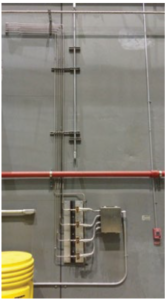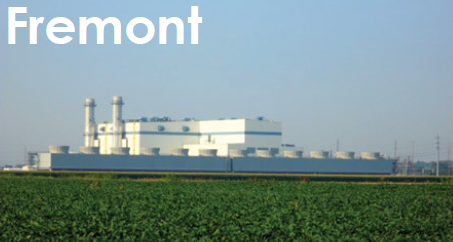Relocation of solenoid valves boosts reliability
Challenge. Fremont Energy Center was built in the early 2000s and remained in some state of lay-up until it went commercial in January 2012. The plant responded as expected and provided much needed relief to MISO and PJM markets. The 501F’s efficient design and cookie-cutter compartmentalization make it a desirable machine in the heavy industrial gas-turbine market. However it also can create unforeseen problems for O&M personnel.
To illustrate: The fuel-gas solenoid valves (pilot, OST, and SOV) were installed inside the gas-turbine compartment at the upper right-hand side, where temperatures, as indicated by thermal imaging, can reach 300F. Such high temperatures caused multiple solenoid-valve failures.
 As indicated by the CMMS system and other information, on average, maintenance technicians were replacing one solenoid valve for each machine monthly. These high-temperature solenoids cost an average of $800 each. Historical data revealed the plant had spent more than $40,000 for replacement valves since COD.
As indicated by the CMMS system and other information, on average, maintenance technicians were replacing one solenoid valve for each machine monthly. These high-temperature solenoids cost an average of $800 each. Historical data revealed the plant had spent more than $40,000 for replacement valves since COD.
Solution. The maintenance team, plant engineer, and O&M manager decided to move the solenoids outside of the compartment. Using the existing taps, the plant personnel ran piping directly out of the compartment and down to a mount on the right side of the structure (photo). The power source for the solenoids was routed similarly.
Results. Relocating the solenoid valves outside the enclosure reduces the risk of premature failure from overheating. Since moving the solenoid valves, there have been no failures.
Project participants: Ed Malone, Josh James, Josh Lidstrom, George Danko, and Michael Bement.
AMP Fremont Energy Center
Owned by American Municipal Power
Operated by NAES Corp
703-MW, gas-fired, 2 × 1 combined cycle (501F) located in Fremont, Ohio
Plant manager: Craig Bonesteel




